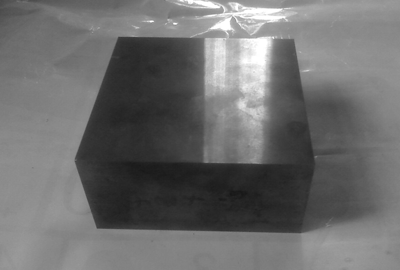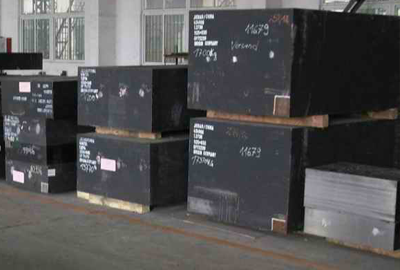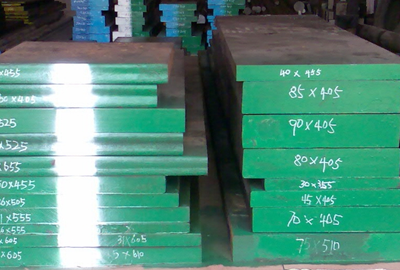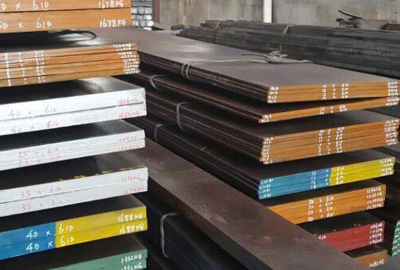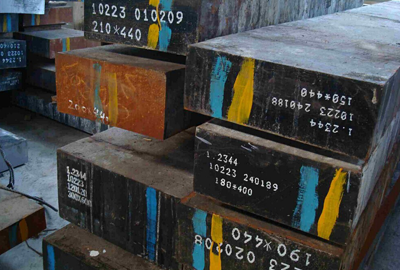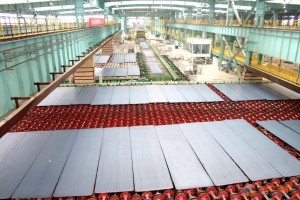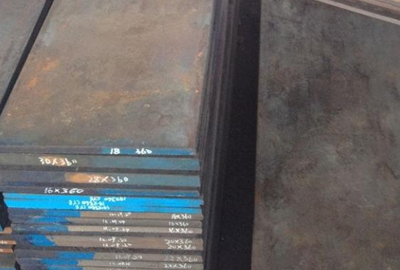Mat.No. 1.2345, DIN X50CrVMo51, AISI Approx. H11
Short Description:
Designation by Standards Mat. No. DIN EN AISI 1.2345 X50CrVMo51 - Approx. H11 Chemical Composition (in weight %) C Si Mn Cr Mo Ni V W Others 0.51 0.95 0.30 5.00 1.35 - 0.90 - - Description UTOPMO4 is a 5% chromium hot work tool steel designed particularly for applications requiring extreme toughness combined with good red hardness. It provides an extra margin of safest in tools subject to heavy hammer blows, and those tools containing deep recesses or sharp corners. While UTOP...
Product Detail
FAQ
Product Tags
Designation by Standards
| Mat. No. | DIN | EN | AISI |
| 1.2345 | X50CrVMo51 | - | Approx. H11 |
Chemical Composition (in weight %)
| C | Si | Mn | Cr | Mo | Ni | V | W | Others |
| 0.51 | 0.95 | 0.30 | 5.00 | 1.35 | - | 0.90 | - | - |
Description
UTOPMO4 is a 5% chromium hot work tool steel designed particularly for applications requiring extreme toughness combined with good red hardness. It provides an extra margin of safest in tools subject to heavy hammer blows, and those tools containing deep recesses or sharp corners. While UTOPMO4 has been designed primarily as a hot work tool steel, it has been used in many cold work applications where extra toughness is required at the sacrifice of some wear resistance.
Applications
UTOPMO4 has been used primarily for tools requiring resistance to softening at elevated temperatures. Such tools include forging dies and punches, die-casting dies, aluminum extrusion dies, hot heading dies, piercing and forming punches, etc.
Physical properties (avarage values) at ambient temperature
Modulus of elasticity [103 x N/mm2]: 215
Density [g/cm3]: 7.70
Thermal conductivity [W/m.K]: 25.0
Electric resistivity [Ohm mm2/m]: 0.52
Specific heat capacity[J/g.K]: 0.46
Coefficient of Linear Thermal Expansion 10-6 oC-1
| 20-100oC | 20-200oC | 20-300oC | 20-400oC | 20-500oC | 20-600oC | 20-700oC |
| 11.7 | 12.5 | 12.7 | 13.2 | 13.4 | 13.6 | 13.8 |
Continuous Cooling Transformation (CCT) Diagram

Click the image to enlarge the diagram.
Time-Temperature Transformation (TTT) Diagram

Click the image to enlarge the diagram.
Soft Annealing
Heat to 760-820oC, cool slowly in furnace. This will produce a maximum Brinell hardness of 250.
Stress Relieving
To relieve machining strains for greater accuracy in hardening, first rough machine, then anneal below the critical 649/677oC a minimum of one hour at temperature, and cool very slowly, followed by finish machining.
Hardening
Harden from a temperature of 1000-1040oC followed by air, oil warm bath (450-550oC) quenching. Hardness after quenching is 54-58 HRC.
Tempering
Tempering temperature: See the diagram bellow.
Tempering Temperature (oC) vs. Hardness (HRC) vs. Tensile Stregth (N/mm2)
| 100oC | 200oC | 300oC | 400oC | 500oC | 550oC | 600oC | 650oC | 700oC |
| 56 | 55 | 53 | 54 | 56 | 54 | 49 | 40 | 31 |
| 2050 | 1980 | 1845 | 1910 | 2050 | 1910 | 1620 | 1260 | 995 |
Tempering Diagram

Click the image to enlarge the diagram.
Forging
Heat slowly and uniformly to a temperature of between 1093/1135oC and forge. Do not work the steel below 927oC. Reheat as often as necessary.
Machinability
The machinability of UTOPMO4 may be rated between 55% and 65% of a 1% carbon water hardening tool steel, or about 40% to 50% of B1112.
Weldability
To salvage tools and dies by welding, preheat to 538oC in a furnace and weld with uncoated arc equipment (atomic hydrogen or heliarc). Keep the temperature of the die above 316oC at all times by reheating until the welding is completed. Upon completion of the weld, return the work piece to the preheating furnace, equalize, and cool in the furnace. Welding should be performed in the annealed condition. However, if welding is performed in the hardened condition, the tool should be retempered at 538oC after hardening. The electrode material used in the weld rod should be of similar analysis to the base material.
Forms manufactured: Please see the Dimensional Sales Program.
Disclaimer
The information and data presented herein are typical or average values and are not a guarantee of maximum or minimum values. Applications specifically suggested for material described herein are made solely for the purpose of illustration to enable the reader to make his own evaluation and are not intended as warranties, either express or implied, of fitness for these or other puposes. There is no representation that the recipient of this literature will receive updated editions as the become available.
FAQ Content
![[0{7)7UAZ(]4W{5TSMC65Q7](https://www.htsteelmill.com/uploads/077UAZ4W5TSMC65Q7.png)
